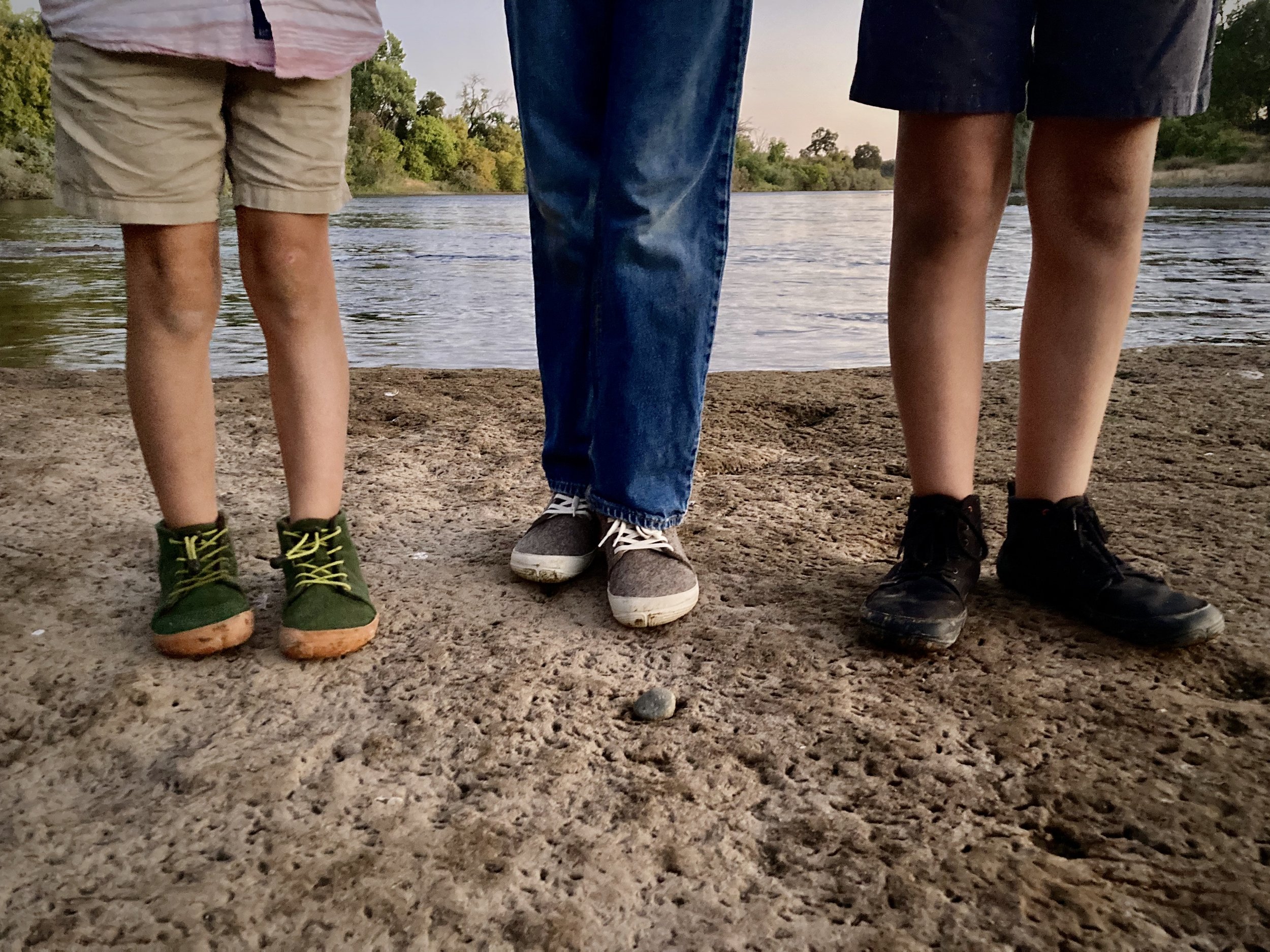3 Reasons Your Kids Will Thrive in Barefoot Shoes
Starting Off on the Right Foot
Something we talk about a lot at the Healthy Feet Alliance is just how important it is for kids to start out with healthy footwear. Many of our modern foot problems could be avoided by starting out on the right foot, or in this case, the right shoe.
However, kids’ foot health is often overlooked, because kids by nature are resilient and adaptable. Sometimes we don't even know they’ve outgrown their shoes until a toe pops out the front of their shoe! Perhaps we figure if it’s not bothering them, then it’s not an issue.
But with a few simple steps we can offer our children the gift of healthy feet as they enter adulthood. Let’s cover 3 important reasons you should pay attention to the shoes your growing child has on their feet.
SHOE SHAPE CAN AFFECT FOOT SHAPE
Did you know that babies are born with more bones than adults have? Babies are born with roughly 275-300 bones and adults have 206 bones. How is that possible? Take a look at the x-ray image of the baby feet below. Their tiny foot bones are floating and not yet connected. In fact, kids foot bones don’t fuse until adolescence.
Radiograph of baby feet that shows bones are not connected yet
Why does this matter?
Let’s talk for a minute about these watermelons. Have you seen this? Farmers have gotten creative and put molds around the melons while they are growing to form fun shapes, like these hearts! Do you see where we’re going with this?
Heart-shaped watermelons grown in a heart-shaped mold
If malleable feet are put into a restrictive shoe, it’ll take on the shape of its container as it grows! A recent survey showed that a whopping 67% of children wear shoes that are too small for their feet. If we want our children to have healthy feet into adulthood, this needs to change!
We not only need to check our children’s shoes regularly too see if they fit, but we also need to ensure that the shape of the shoe is not pushing the toes together. Babies are born with their toes fanned out, making the toes the widest part of the foot. This shape has become so unusual in adult feet, and bunions have become so commonplace, that most people don’t realize that a natural adult foot shape should also be widest at the toes, not the ball of the foot.
Image of foot on the left with severe bunion and image of foot on the right is widest at the tip of the toes.
A foot with naturally aligned toes is a healthy and stable foot.
What Can You Do?
Check toddler/children’s shoe size regularly to ensure they are wearing the proper size.
Buy shoes that are widest at the toes to allow for the natural foot shape to persist.
2) KIDS ARE DEVELOPING GAIT PATTERNS THEY WILL MOST LIKELY KEEP FOR LIFE
First, let’s clear the air. Gait patterns CAN be changed. Researcher, Irene Davis, has shown this in the lab. However, it takes a lot of mindful practice and usually takes place after realizing that current gait patterns are causing a problem. All this to say, that it’s important to start children off with healthy and efficient ways of walking. We mostly do this by staying out of the way!
Children walking along a dirt path near a wide stream
Chair Sitting Impacts Gait
Some things that alter children’s walking patterns are sitting patterns and footwear. Unfortunately, in public schools today, most children sit at desks for upwards of 6 hours every day. Chair sitting for long periods can create imbalances in the body and affect the way children move.
Footwear Impact Gait
Likewise, footwear also has the potential to create imbalances in the body. Shoes that have an elevated heel and a lot of cushion (which is MOST normal shoes) encourage heel striking running patterns and heavy impact loading forces.
In Katy Bowman’s book, Whole Body Barefoot, she explains how a 1-inch heel on a children’s shoe has an even greater effect at distorting alignment than a 1-inch heel on an adult shoe. Why is this? Because the shorter the foot, the more forward the body is projected. So, although a small heeled kid’s shoe may not seem like a big deal, remember that even a small amount of heel has an impact on alignment.
Flat and Flexible Footwear
To maintain balance in the body and natural gait patterns, find footwear that is flexible and flat! This allows for more movement and more mobility through the foot and allows children to walk as if they are barefoot. Also, encourage children to be active and to sit on the floor often! This can help keep those tissues and ligaments from tightening up from being in a shortened position over time.
Kids playing with a soccer ball barefoot outside in a grove of trees.
Developing efficient gait patterns and stronger feet as a child has many benefits down the road, including reducing injury risk and even reducing fall risks later in life.
What Can You Do?
Encourage children to be active and to sit on the floor when possible.
Choose footwear that is flexible, thin soled and flat!
3) KIDS’ FEET NEED TO FEEL THE GROUND
Did you know that our feet contain more sweat glands and nerve endings per square centimeter than anywhere in the body? What does this tell us? That our bodies have developed to take in information about our surroundings from the ground up.
Sensory Feedback Helps Coordination
Today’s footwear is often so thickly cushioned that the sensory input our kids would get from the ground beneath their feet is dampened to such a degree that they can’t feel much of anything. This lack of information they get from their feet can dull their senses and decrease proprioception (knowing where the body is in space).
Baby and parent barefoot outside
Maybe you’ve noticed toddlers that are just learning to walk usually prefer to go barefoot. One reason for this is because feeling the ground helps them feel more stable on their feet. It’s important to let kids go barefoot whenever it is safe to do so. When it’s not feasible to go barefoot, wearing thin and flexible shoes can still allow for some sensory input from the ground.
In short, letting your kids’ feet feel the ground is a great way to build a healthy nervous system.
What Can You Do?
Encourage your children to go barefoot as much as possible.
Choose footwear that is thin enough to have some ground feel.
Looking For More Information?
We hope this article helps you see the role footwear and lifestyle plays in your child’s foot health! If you’re ready to find the right shoes for your kids, check out some of our favorite kid’s shoes.











